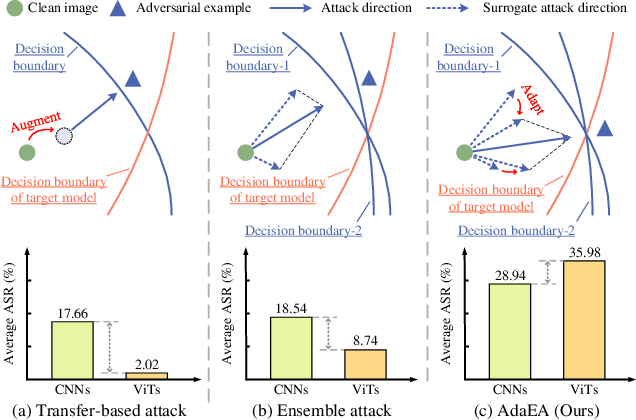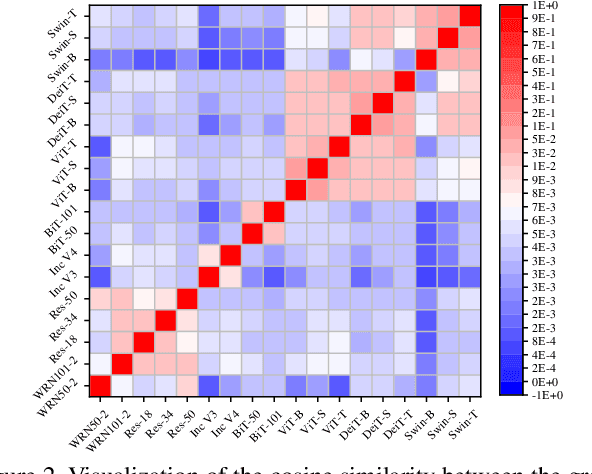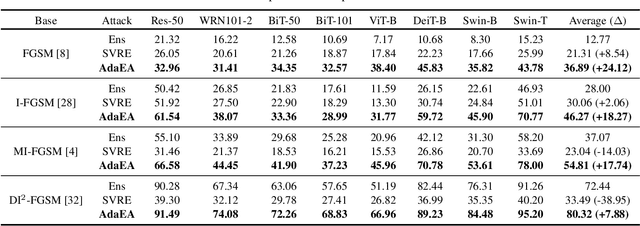An Adaptive Model Ensemble Adversarial Attack for Boosting Adversarial Transferability
Paper and Code
Aug 05, 2023



While the transferability property of adversarial examples allows the adversary to perform black-box attacks (i.e., the attacker has no knowledge about the target model), the transfer-based adversarial attacks have gained great attention. Previous works mostly study gradient variation or image transformations to amplify the distortion on critical parts of inputs. These methods can work on transferring across models with limited differences, i.e., from CNNs to CNNs, but always fail in transferring across models with wide differences, such as from CNNs to ViTs. Alternatively, model ensemble adversarial attacks are proposed to fuse outputs from surrogate models with diverse architectures to get an ensemble loss, making the generated adversarial example more likely to transfer to other models as it can fool multiple models concurrently. However, existing ensemble attacks simply fuse the outputs of the surrogate models evenly, thus are not efficacious to capture and amplify the intrinsic transfer information of adversarial examples. In this paper, we propose an adaptive ensemble attack, dubbed AdaEA, to adaptively control the fusion of the outputs from each model, via monitoring the discrepancy ratio of their contributions towards the adversarial objective. Furthermore, an extra disparity-reduced filter is introduced to further synchronize the update direction. As a result, we achieve considerable improvement over the existing ensemble attacks on various datasets, and the proposed AdaEA can also boost existing transfer-based attacks, which further demonstrates its efficacy and versatility.
 Add to Chrome
Add to Chrome Add to Firefox
Add to Firefox Add to Edge
Add to Edge